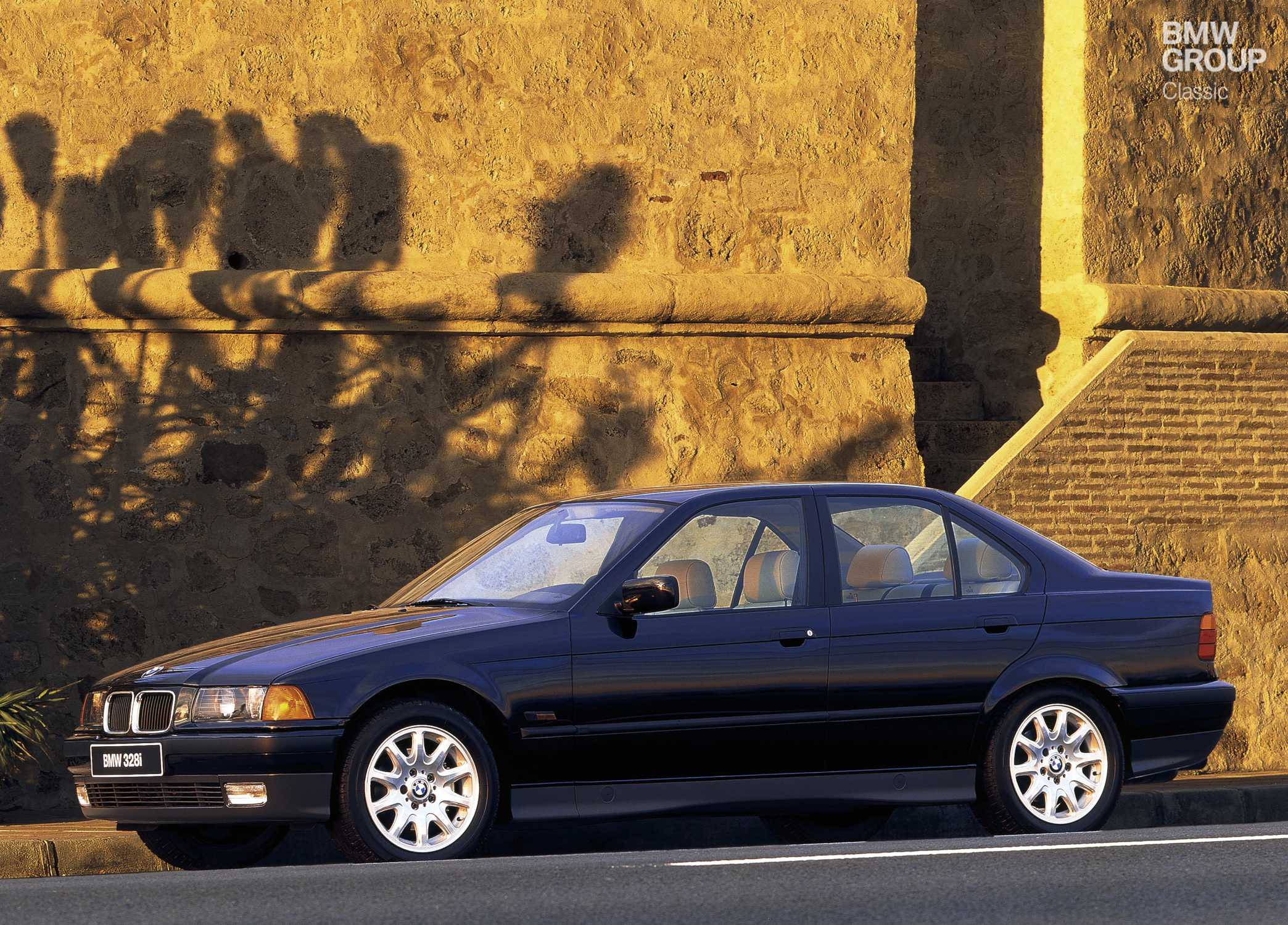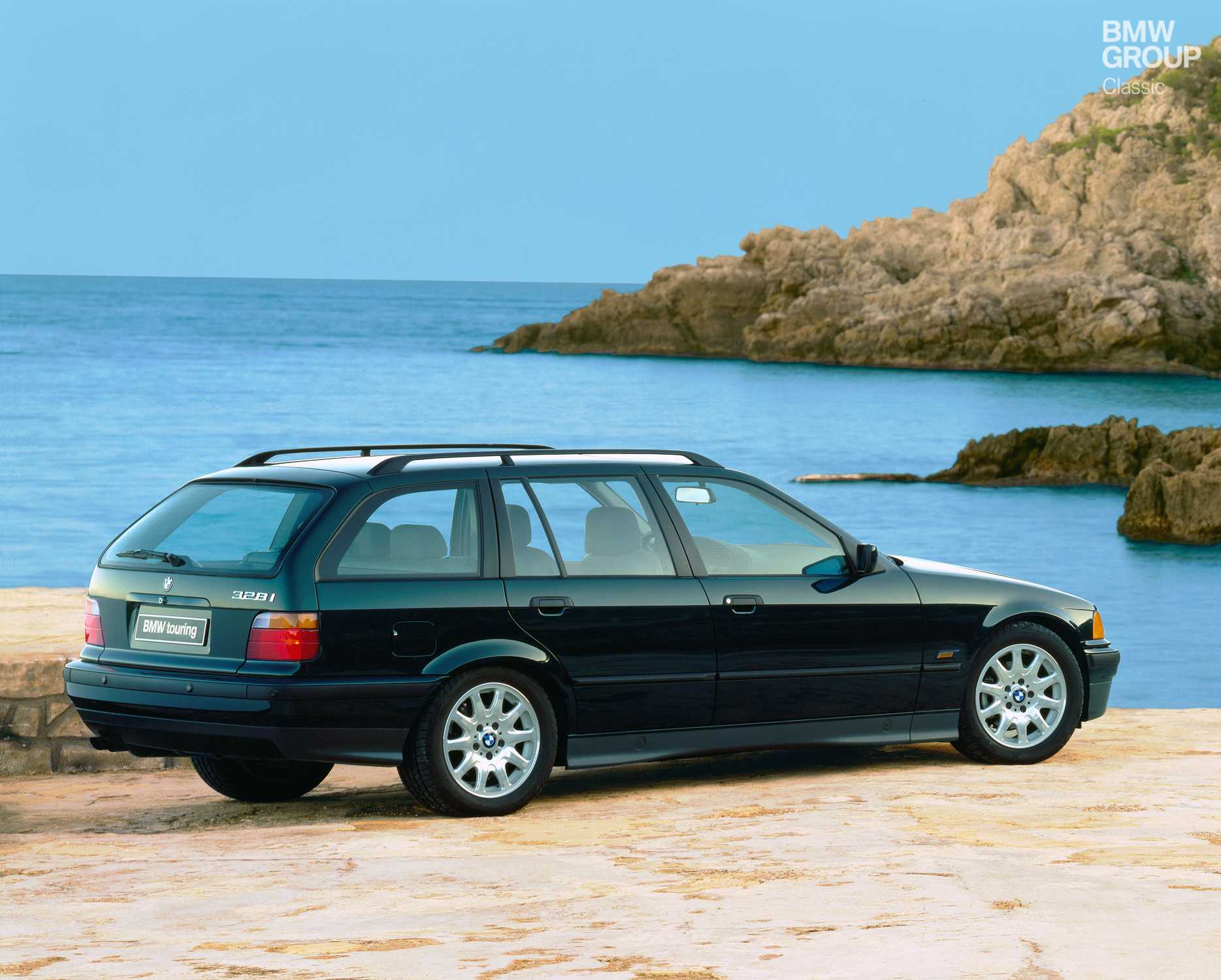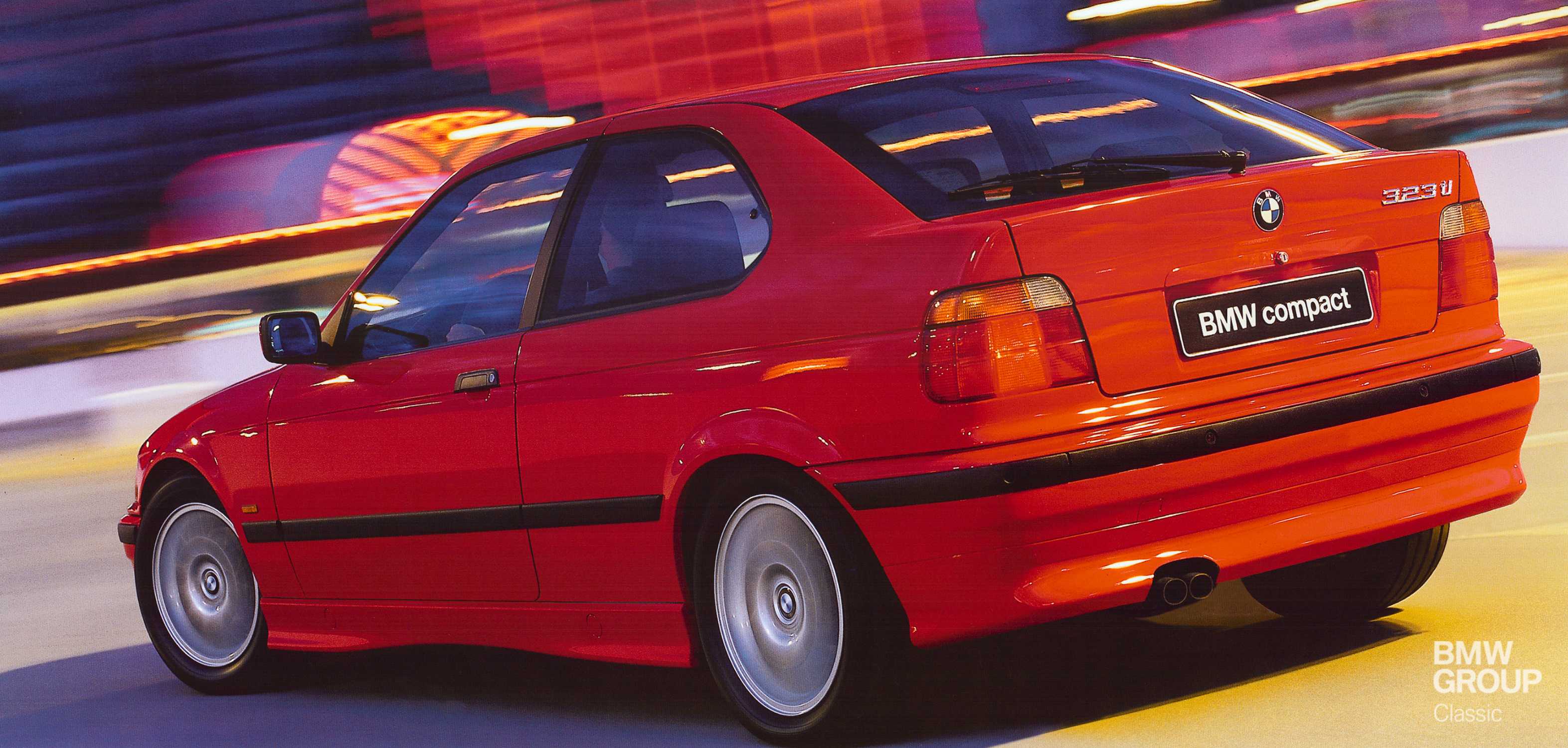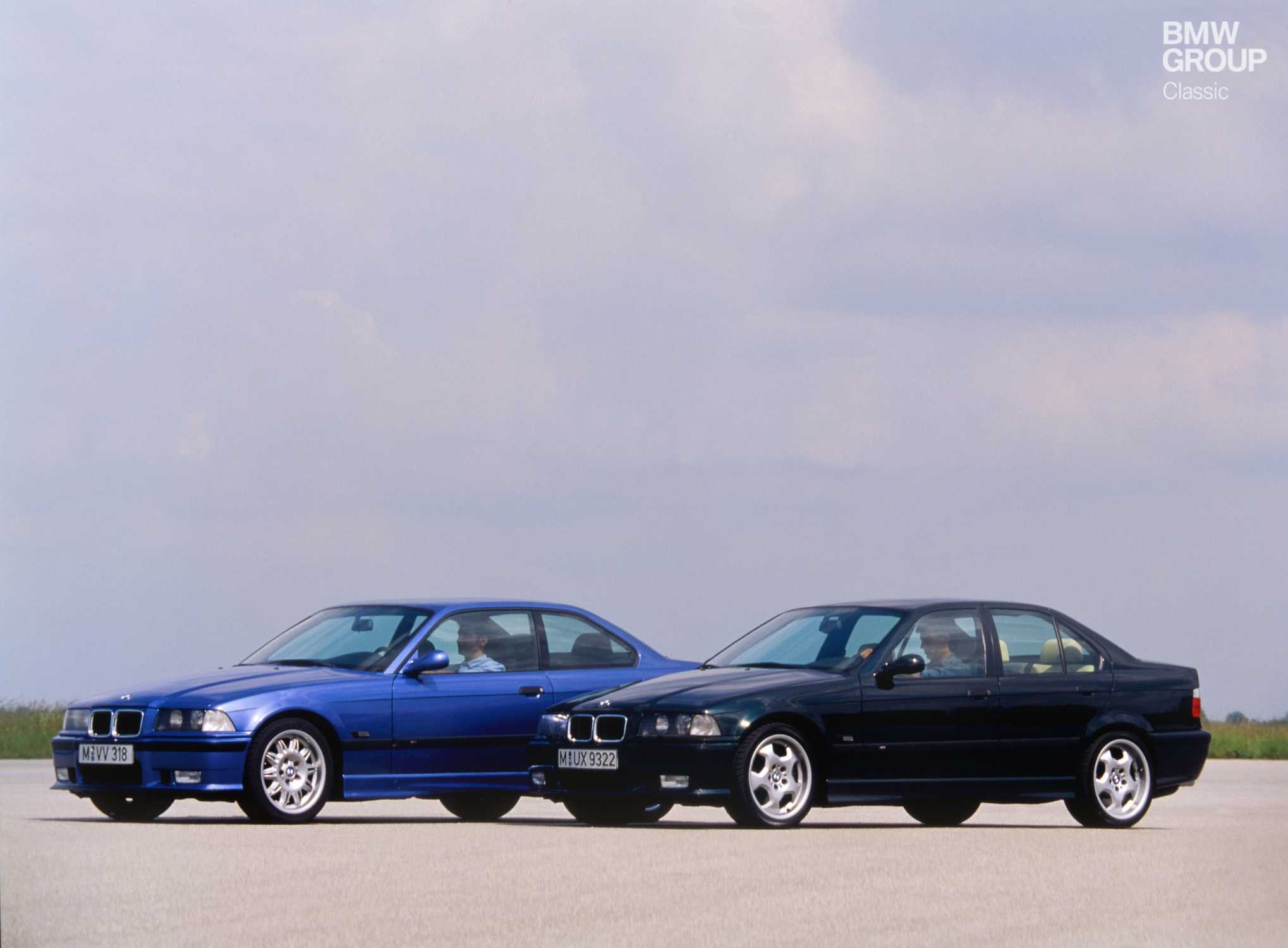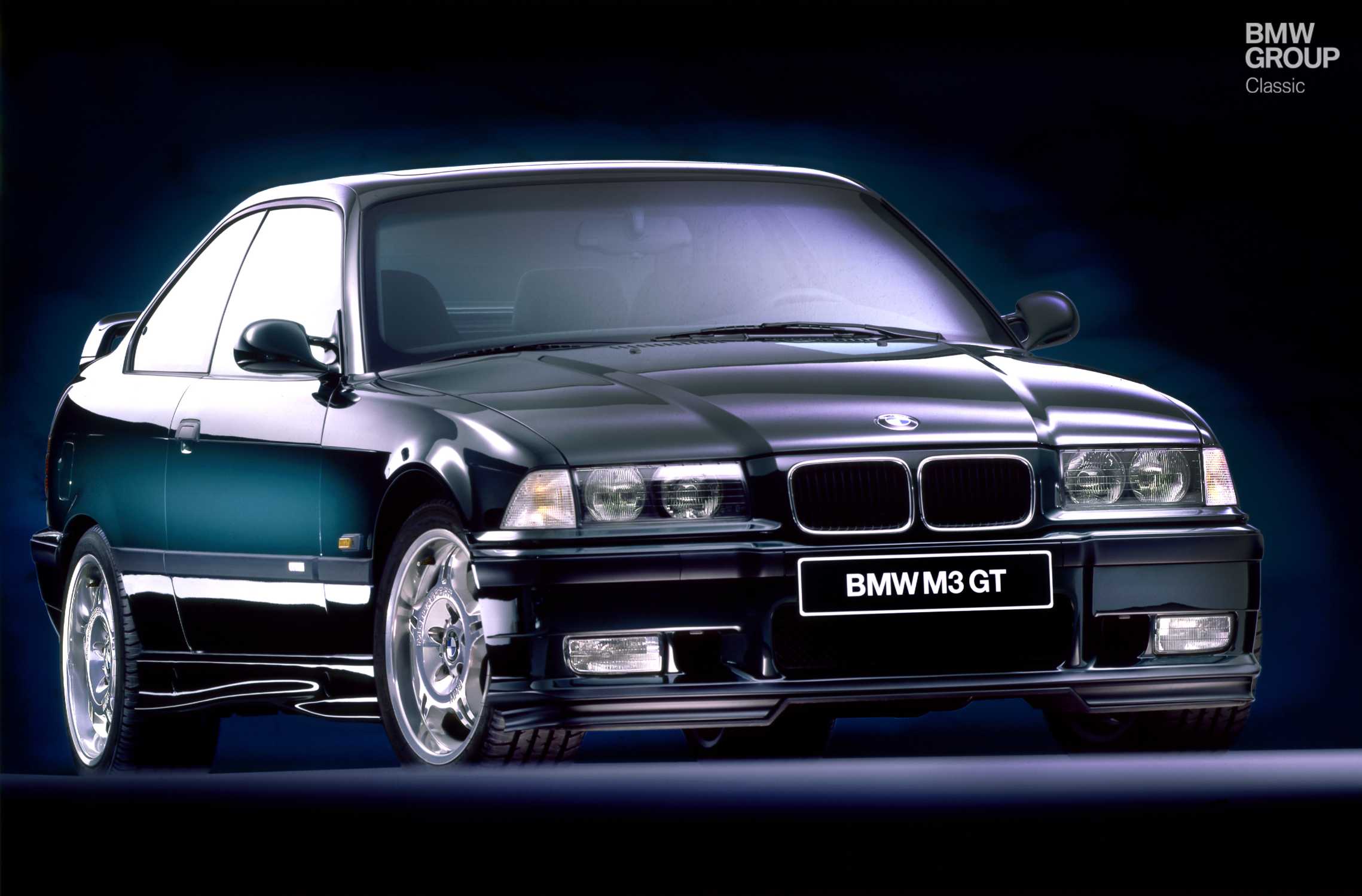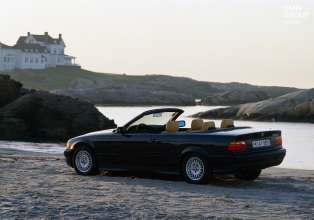Let’s start with an obvious truth: everything has its day. Nowhere is this more evident than with items we use on a daily basis. They get old, wear out or fall apart. We forget them. When we re-encounter them, we’re caught off guard. We recall that we once owned one similar. Every so often we’ll long to have it back. Might it have been a E36 BMW 3 Series? Gradually these cars are retiring from everyday use for a quiet life as garaged collector’s items. And that makes it high time to reminisce.
Succeeding the successor.
With its predecessor such a roaring success, the E36 had a tough act to follow. The E30 Sedan was in production from 1982 to 1991, the Convertible until 1993 and the Touring until 1994. People developed quite a sweet spot for it. And the E30 is now experiencing a revival. With more and more drivers taking a trip down memory lane, prices have risen and the number of wistful sighs accompanying the E30 have grown deafening.
Is it even possible to replace such a winning model? Not if you simply try to imitate what has gone before. The best approach is to do everything differently, thought the new car’s designer; Pinky Lai was born in Hong Kong and had worked for Ford in Cologne prior to moving to BMW and then on to Porsche. The E36 was bigger and came with four doors as standard. The headlights were placed behind glass. A standalone Coupe version was added to the product line-up. On the Touring, the tailgate opened full-width. The Convertible was, naturally, based on the stylish Coupe. Occupants benefited from improved aerodynamics and automatically extending roll-over protection. The E36 even came in a hatchback body style. This was reminiscent of the 2002 Touring and known as the “Compact”. The people behind it were bold and had vision. Another unusual design was the Convertible Sedan by Stuttgart-based Baur. This was based on the four-door Sedan and was bigger than any 3 Series that had gone before.
More performance. With more spec.
There would be no compromises in terms of suspension or performance, that went without saying. The 3 Series needed to be agile and surefooted, its engines free-revving and the gearshift crisp. It was a BMW, after all. The new car delivered the poise, assurance and driving enjoyment to which aficionados had become accustomed, and which they now expected. This was particularly true with one of the sumptuous six-cylinder engines on board, but the four-cylinders also had a taste for revs. And the diesel units, too, were now long established. Reinterpreting the pleasure of its predecessors for the modern age, the new 3 Series’ horsepower ranged from 100 to 321. Only an all-wheel drive version was missing from the cast, although this did return with the successor generation.
M and M.
The E36 generation lavished customers with two different M3s for the price of one (so to speak!). First came the nifty Coupe, which was only natural. And it was followed by the decidedly regal Sedan, which offered highly understated elegance. This was a BMW for connoisseurs who enjoyed performance but didn’t necessarily want to broadcast it from afar. As an option, it came with a sequential SMG gearbox, a new form of gearshift inspired heavily by motor sport. The SMG ‘box suffered from significantly less power loss than a conventional torque-converter transmission.
Enduring value.
The E36 3 Series Sedan is now (c. 2016) 18 years old at its most youthful. By this age, children are starting to leave home – and cars are typically clocking up some serious mileage. It’s verging on normal for them to have travelled the equivalent of five times around the globe; ten laps wouldn’t be unusual. While the E36 is regarded as robust, some history of good maintenance is clearly desirable. The soft-tops have mostly been better cared for and racked up less mileage than their fixed-roof counterparts. As for the M versions, these have never been banal everyday workhorses, but they can certainly cope with daily use.
If not now, when?
The E36 remains in strong supply, but numbers are dwindling, for sure, and well-appointed six-cylinder models with a documented service history do not hang around for long. The situation here is similar to that of the E30; memories kick in, the sighs of longing increase and a past model generation demands rediscovery. As a successor, the E36 did well. As a progenitor of future models, it looks similarly impressive.
Sometimes a good exhale of breathe says it best.
